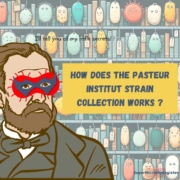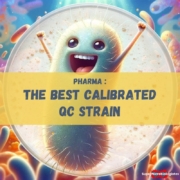How does the Institut Pasteur’s bacterial strain collection work?
We were living our lives as microbiologists just fine until one day, a SuperMicrobiologist asked us:
“We are asked to use strains with less than 5 passages, but how do culture type collections preserve them for decades?”
Anonymous SuperMicrobiologist
And since then, we haven’t slept…
So, we contacted one of the most renowned strain collections in the world: The Collection of the Institut Pasteur (CIP)!
Best QC strains
Food & Water : The best QC Strain suppliers
We polled the SuperMicrobiologists.
Here are their favorite QC Strains
What is a strain collection?
Let’s clear one thing up right away… At SuperMicrobiologists, we’ve gotten into the habit of calling a collection of microorganisms “a strain collection”. But to be entirely accurate, we should talk about Biological Resource Centers or even biobanks.
A strain collection is a bit like a library… of strains; Microorganisms (bacteria, yeasts, molds, etc.) are characterized (biological and genetic properties), classified, and preserved.
Just like libraries, there are different types of strain collections. There are private collections, which allow laboratories (often industrial) to preserve their strains of interest. But there are also public collections that provide access to their strains.
In short, strain collections are very important as they preserve part of our heritage… They are of general interest, so to speak… but that’s just our opinion 😉
History of the Pasteur biobank
The Collection of the Institut Pasteur is one of the oldest collections in the world. It dates back to 1896.
Initially, strains were preserved on culture media and regularly subcultured to keep them alive. Can you imagine the work involved on subculturing days? Not to mention the number of mutations!
Then, in the 1950s, an invention revolutionized strain preservation: lyophilization!
This technology allows strains to be preserved longer without subculturing. It saves a lot of time and, importantly, results in fewer mutations.
Where do the biobank’s strains come from?
For the CIP, originally, strains came from Paris hospitals located near the Institut Pasteur. The collection was mainly composed of medical strains.
Then, the CIP acquired bacteria from National Reference Centers (CNR) after the retirement of their directors.
From 1991, the nature of the stored strains evolved towards newly described bacterial species and environmental bacteria.
It’s essential to know that whenever a new species is described somewhere in the world, it must be deposited in at least two collections in two different countries for conservation.
Today, the CIP contains over 25,000 strains from 5,500 different species.
Best QC strains
Pharma : The best QC Strain suppliers
We polled the SuperMicrobiologists.
Here are their favorite QC Strains
How are culture strains managed in a biobank?
This is where it gets interesting…
Each new strain entering the CIP follows a very precise process.
First, the purity of the strain is verified (non-contaminated).
Then, from the initial strain, about 15 ampoules are produced:
- 5 are kept as the primary lot (to reproduce distribution lots).
- 7 ampoules for distribution to clients.
- 2 ampoules are stored in a separate building (in case of problems).
- The last ampoule is used for quality control.
For optimal safety, the primary lot is preserved using two methods (lyophilization and freezing at -80°C). If the strain cannot tolerate lyophilization (it happens!), it is stored in liquid nitrogen.
At the end of production, the strain is identified and characterized (e.g., antibiotic resistance) using advanced technologies (sequencing and/or Maldi-Tof). A collection number is then assigned to it. Example: CIP 54.8 for E.coli.
How are collection numbers assigned at the CIP?
Over the years, the numbering system has changed. Currently, it’s six digits that increment: CIP 112030, CIP 112031… Back in the CIP 54.8 days, the number 54 described the year the strain was deposited in the CIP.
Once this process is complete, the strains are added to the catalog and can be marketed by the CIP.
Strain production and biobanking are done according to ISO 20387 standards.
For now, strains are sold with assigned qualitative values. But the CIP is currently working on assigning quantitative values. Similarly, the mold strain collection should soon be available.
Here you go, we hope you enjoyed this journey into the heart of the CIP. If you know any other microbial biobank from the inside, do not hesitate to contact us, we love learning new things !
We would like to thank Fay Betsou and Dominique Clermont for opening the doors of the CIP to us and explaining how it works!

















Leave a Reply
Want to join the discussion?Feel free to contribute!